
Spoonbills are a genus, Platalea, of large, long-legged wading birds. The spoonbills have a global distribution, being found on every continent except Antarctica. The genus name Platalea derives from Ancient Greek and means "broad", referring to the distinctive shape of the bill. Six species are recognised, which although usually placed in a single genus have sometimes been split into three genera.

The genus Passerina is a group of birds in the cardinal family (Cardinalidae). Although not directly related to buntings in the family Emberizidae, they are sometimes known as the North American buntings.

John Edward Gray was a British zoologist. He was the elder brother of zoologist George Robert Gray and son of the pharmacologist and botanist Samuel Frederick Gray (1766–1828). The standard author abbreviation J.E.Gray is used to indicate this person as the author when citing a botanical name. The same is used for a zoological name.

The genus Paradisaea consists of six species of birds-of-paradise. The genus is found on the island of New Guinea as well as the nearby islands groups of the Aru Islands, D'Entrecasteaux Islands and Raja Ampat Islands. The species inhabit a range of forest types from sea level to mid-montane forests. Several species have highly restricted distributions, and all species have disjunct distributions. A 2009 study examining the mitochondrial DNA of the family found that the Paradisaea birds-of-paradise were in a clade with the genus Cicinnurus. It showed that the blue bird-of-paradise was a sister taxon to all the other species in this genus.

The Ophidiasteridae are a family of sea stars with about 30 genera. Occurring both in the Indo-Pacific and Atlantic Oceans, ophidiasterids are greatest in diversity in the Indo-Pacific. Many of the genera in this family exhibit brilliant colors and patterns, which sometimes can be attributed to aposematism and crypsis to protect themselves from predators. Some ophidiasterids possess remarkable powers of regeneration, enabling them to either reproduce asexually or to survive serious damage made by predators or forces of nature. Some species belonging to Linckia, Ophidiaster and Phataria shed single arms that regenerate the disc and the remaining rays to form a complete individual. Some of these also reproduce asexually by parthenogenesis.
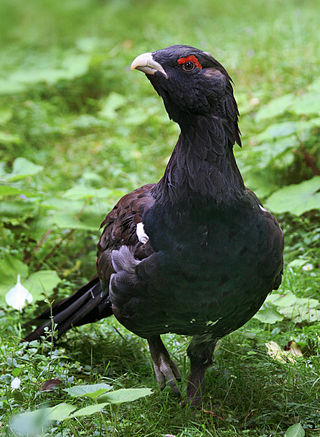
Tetrao is a genus of birds in the grouse subfamily known as capercaillies. They are some of the largest living grouse. Feathers from the bird were used to create the characteristic hat of the bersaglieri, an Italian ace infantry formation.
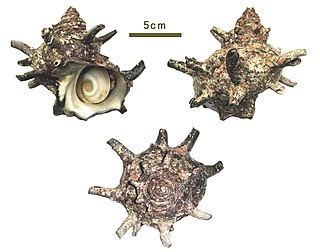
Turbinidae, the turban snails, are a family of small to large marine gastropod molluscs in the superfamily Trochoidea.

Calliostomatidae is a family of sea snails within the superfamily Trochoidea and the clade Vetigastropoda.
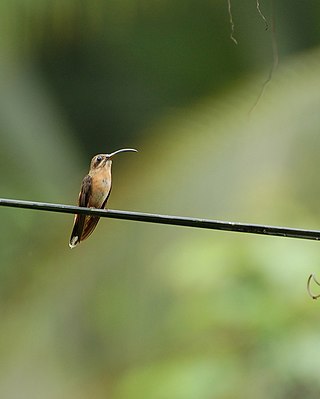
Glaucis is a genus of hummingbird in the family Trochilidae.

Parus is a genus of Old World birds in the tit family. It was formerly a large genus containing most of the 50 odd species in the family Paridae. The genus was split into several resurrected genera following the publication of a detailed molecular phylogenetic analysis in 2013. The genus name, Parus, is the Latin word for "tit".

Pipra is a genus of birds in the manakin family Pipridae.
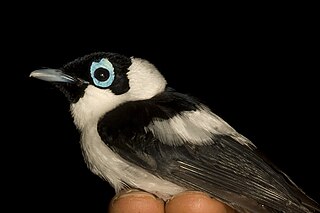
Arses is a genus of monarch flycatchers in the family Monarchidae. The genus is restricted to forest and second growth on the island of New Guinea, a few surrounding islands and northern Queensland, Australia. The genus is separated by their frilled necks, fleshy blue eye wattles and delicate pendent nests. They also have a distinctive foraging technique, hopping up tree trunks in a spiral fashion.

Tanygnathus is a genus of parrots in the Psittaculini tribe, of the superfamily of Psittacoidea.
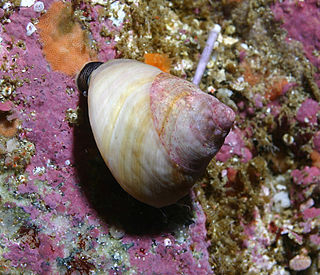
Trochoidea is a superfamily of small to very large vetigastropod sea snails with gills and an operculum. Species within this superfamily have nacre as the inner shell layer. The families within this superfamily include the Trochidae, the top snails. This superfamily is the largest vetigastropodan superfamily, containing more than 2,000 species.

Cerithiidae, common name the cerithiids or ceriths, is a large family of medium-sized marine gastropods in the clade Sorbeoconcha.
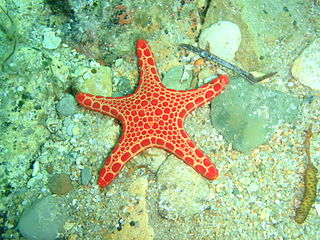
Goniasteridae constitute the largest family of sea stars, included in the order Valvatida. They are mostly deep-dwelling species, but the family also include several colorful shallow tropical species.
Calliostomatinae is a subfamily of gastropods, belonging to the family Calliostomatidae.
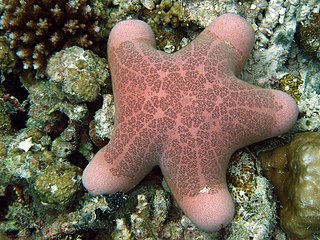
The Oreasteridae are a family of sea stars in the class Asteroidea.
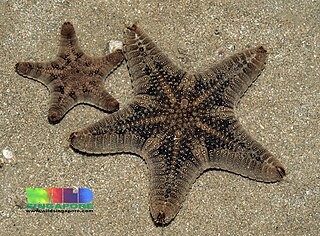
Goniodiscaster is a genus of sea stars in the family Oreasteridae. Members of this genus can be found off the coasts of India, southeast Asia, and Australia. Other taxa commonly misidentified as this genus include Anthenea, Tosia, and Pentaceraster.

Tosia australis is a species of starfish belonging to the family Goniasteridae. It is native to Australia, New Zealand, and South Africa.



















